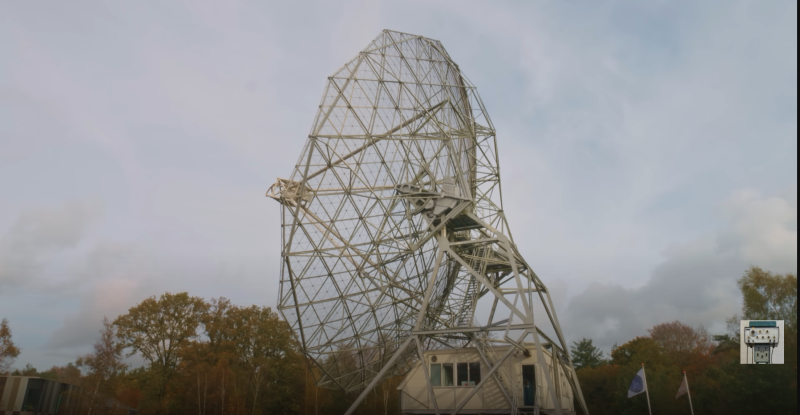There’s something inspiring about echos. Who among us hasn’t called out or clapped hands in a large space just to hear the sound reflected back? Radio takes this to a whole new level. You can bounce signals from buildings, aircraft, the ionisphere, or even the Moon itself. Humans have been bouncing radio waves from the moon for decades. It’s been used at war, and in peacetime. But [Hainbach] might be the first to use it for music.
Earth Moon Earth or EME communication is quite popular with amateur radio operators. With the right equipment, you can bounce a signal off the moon and hear the echo around 2.5 seconds later. The echo isn’t quite normal though. The moon and the earth are both rotating and moving in relation to each other. This causes Doppler shifts. At higher frequencies, even the craters and surface features of the moon can be heard in the echo.
[Hainbach] spent some time learning about moonbounce at a large radio telescope, and wanted to share this strange audio effect with the world. Unfortunately, most of us don’t have the large microwave dish required for this. The next best thing was to create an application which emulates the sound of a moon bounce. To this end, [Hainbach] created a Moon Echo, an audio plugin that emulates a moonbounce.
Moon Echo was created using sounds from a soprano signer and a double bass. [Hainbach] had to be careful not to be too musical, as ham operators are not allowed to broadcast music. This meant all the tests had to be broken into short non-musical clips. Rolling all this empirical data into a model took quite a bit of work, but the end result is worth it.
If you’d like to learn how to moonbounce yourself, check this article out.
















In 1981, I had an opportunity to take over the operation of a U.S. Air Force height-finder RADAR system for a few minutes one night during daily maintenance time, at a time when the Moon was close to setting, which means, as the man says, that there’s an upward doppler shift as we were moving towards the Moon. The system transmitted 2 MW pulses of around 5 μs, repeated at about 300 Hz, giving it under terrestrial conditions a range of a little over 200 nautical miles. The receiver bandwidth was wide enough that I didn’t think doppler shift would put the echoes out of band. As mentioned in the video, the Air Force had been aware at the time this system was designed, that it would be possible for reflections from the moon to be received, so the antenna was designed to sweep at a rate that prevented it from pointing the exact same direction 2.5 seconds after transmitting a pulse, to be able to receive reflections of that pulse. Knowing this, I stopped the antenna sweep and just positioned it manually. I wasn’t sure what to expect, but what I saw wasn’t what I expected. I naively expected to just see a rise in the noise level as I moved the antenna past it similar to solar noise strobes I’ve seen before, but instead saw a set of tall spikes at all ranges. I instantly realized what was happening: the moon is a sphere about 1100 miles, so I was getting reflections from many different ranges, and the peaks were caused by constructive interference of reflections from different craters.
I later realized that this effect was similar to thunder from a lightning bolt: the bolt happens in an instant, but to an observer on the ground the sound comes from many different distances, spreading the impulse over several seconds.
I’m curious about what modulation mode was used for the experiments in the video.
I recall reading on a doorknob label somewhere that “the imperfections are a natural part of our handmade process”. I have noticed a few spellcheck errors in previous articles too, but I think thats what you get when you hire engineers, I trust all the math checks ut though! :P
Why pay a proofreader when you do it for free :)
If you spaced 2 receive dishes pointed at the target separated by 800 microseconds apart at radio speed you should be able to hear in stereo headphones the room “acoustics” of the grand canyon or mars’ big valley regardless of the ping or toot transmitted. Bats can hear the difference in prey in that ping return, they must have doppler returns.
All the shenanigans I heard on the transmissions fall under the spurious or coded signals description, some sounded like AFSK.
It’s too bad hams can’t ham it up with public domain and original music on appointed times and freqs.
My license prohibits broadcasting, and requires periodic use of my callsign.
It does not prohibit my playing an instrument over the air.
Katie Patterson did something similar, but sent the music as Morse code. She sent Moonlight Sonata
https://katiepaterson.org/artwork/earth-moon-earth-moonlight/
Hunh? That’s it. Now I’m convinced I will never understand “Art”.